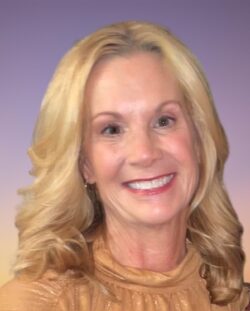How to Align Senior Living Sales and Marketing Strategies
Align sales and marketing strategies to boost occupancy.

Align sales and marketing strategies to boost occupancy.
Published on: November 20, 2023
Last updated: May 22, 2025

Managing a senior living community in 2025 is full of challenges. While occupancy is up according to recent senior living trends, so are costs and staffing shortages. To stay competitive, you must serve a discerning audience with complex needs — all while closely monitoring margins.
That’s why it’s more important than ever to align your sales and marketing strategies to drive occupancy and boost revenue growth — and to do so in a way that works for your teams, your residents, and your business.
Many times, marketing and sales strategies occur in silos, and each strategy usually focuses on separate goals. Marketing strategies typically focus on generating leads, creating brand awareness, and nurturing prospects while sales strategies prioritize converting leads into paying customers.
However, the historical separation between sales and marketing can often negatively impact your ability to attract, engage, and retain residents. Aligning these teams supercharges your efforts and accelerates your path to achieving occupancy and revenue goals.
Here are a few benefits of aligning your sales and marketing strategies:
Related: Learn more about how to create an effective marketing strategy for senior living.
A senior living sales and marketing alignment strategy should account for the industry-specific challenges mentioned with a strong emphasis on building relationships, educating and informing potential residents and families, and prioritizing their needs throughout the journey.
Follow these steps to better align your sales and marketing strategies:
Clear, measurable goals create a strong foundation for aligned senior living sales and marketing strategies. But how do you ensure you’re setting the right ones?
Start by establishing SMART goals — specific, measurable, achievable, relevant, and time-bound. This gives both teams a clear direction and shared purpose. Including sales and marketing in the process also builds early buy-in and alignment.
Once your goals are in place, regular check-ins and performance reviews help you stay agile and adjust as the market evolves.
Start by conducting market research and developing detailed customer profiles to better understand the needs and preferences of seniors and their families. Consider factors like age, care requirements, lifestyle expectations, and financial readiness.
From there, break down the specifics. What does a high-intent prospect look like? How do you define a hot lead? Clarifying these elements ensures both sales and marketing teams are aligned on which opportunities to prioritize.
Work together to establish a shared definition of a qualified lead, and then use lead scoring to rank prospects by engagement and potential value. This helps your sales team focus their time and energy on the most promising opportunities.
The senior living buying process is complex. Many potential leads require slow nurturing over a long period of time.
Follow these tips:
Strategies can look solid on paper, but the reality may not meet your expectations. Sales and marketing tools automate the process and ensures everyone follows the same process.
For instance, investing in a robust CRM system specifically designed for the senior living industry will help you:
Also, consider tools for marketing automation, decision support, analytics, and communication. Regularly evaluate the effectiveness of these tools and make adjustments as needed.
Produce blog posts, social media updates, and videos that answer your target audience’s questions or address their pain points.
Go beyond general topics by identifying the specific concerns of each target persona and tailoring your content to address them directly. Content that educates and informs, not sells, positions your community as a trusted resource and partner in the senior living journey.
To attract qualified leads, meet them where they are — online and in the community. Use senior-focused directories, referral services, and targeted digital ads to reach the right audiences and showcase your community with rich descriptions, professional photos, and virtual tours that reflect real life.
Once leads start coming in, move fast and stay personal by responding within 24 hours with messages tailored to each lead’s questions and interests. Your CRM should guide the process — track lead activity, set priorities, and make sure everyone receives follow-up.
When it’s time to schedule a tour, make it meaningful. Highlight services and amenities that align with the prospect’s goals, introduce them to staff or residents with similar interests, and make the experience feel personalized — not one-size-fits-all.
And don’t stop there. Post-tour follow-up is just as important. Provide thoughtful next steps, helpful resources, and a clear path forward.
Start by digging into your numbers. This includes tracking conversion rates, occupancy trends, and key performance indicators (KPIs) tied to your goals. From there, you can review your sales funnel from top to bottom — where are prospects dropping off? Are there seasonal dips or consistent slow points worth investigating?
People matter as much as metrics. Keep an eye on staff performance, including lead response times, tour-to-move-in conversions, and follow-through. Use this data to spot strengths, uncover gaps, and guide coaching opportunities.
And don’t let insights sit in a spreadsheet. Use what you learn to refine campaigns, adjust workflows, and better support your teams. When you fuel your strategies by real-time data, you can make smarter decisions — and see better results.
Your goals could include increasing the number of incoming leads each month, improving lead conversion rates, enhancing customer satisfaction, or boosting resident retention.
Focus on core occupancy and sales KPIs, such as:
Also consider marketing and lead generation KPIs, such as:
Don’t forget the role of residents and family in your KPIs. Examine:
Finally, reflect on key financial metrics, such as revenue per resident and net operating income.
By consistently monitoring these KPIs, you can gain valuable insights into how effective the alignment of your sales and marketing teams is and make data-driven decisions to optimize their performance.
Keep measuring the same metrics through a single business quarter and reevaluate once core insights come to light. Remember, constantly changing your strategy can be just as damaging as never changing it at all.
Aiming to optimize and align your senior living sales and marketing teams is no small feat. Your entire organization must communicate seamlessly and respond to prospects without delay — and spreadsheets or disconnected point systems just can’t keep up.
Investing in dedicated senior living solutions puts your sales and marketing teams on the same page throughout the buying process, which helps you build and maintain a high-performing sales and marketing culture.
Ready to build a better-performing sales and marketing team that aligns easily? Learn more about Aline’s sales and marketing solutions, which can help you surpass your goals and find success.
Book a personalized demo today!


Karen McDonald
Senior Marketing Advisor
Blogs, stories and studies from the forefront of senior living operations

Learn how to navigate the complexities of health care payors in senior living for successful revenue management, streamlined operations, and successful…

Boost leads, personalize outreach, automate tasks, and gain data-driven insights with AI solutions.

Simplify menu planning in senior living with smart strategies and software that boost efficiency, consistency, and resident satisfaction.

Better care starts with better insights. Learn how senior living teams are using data and technology to create more meaningful resident experiences.

Learn how to improve employee retention in senior living communities and address one of the industry’s biggest staffing challenges.

Disconnected systems hold teams back. Modern senior living financial reporting improves margins, forecasting accuracy, and operational speed.
We’re using cookies on this site to improve your experience. Cookies help us learn how you interact with our website, and remember you when you come back so we can tailor it to your interests.
You can find out more about cookies and usage on our cookie policy page.
Some of these cookies are essential, while others help us to improve your experience by providing insights into how the site is being used.
For more detailed information on the cookies we use, please check our privacy policy
Your experience is important to us. We’re redirecting you to our new Aline website, where you’ll discover how our complete suite of senior living solutions can help you grow occupancy and revenue, optimize operations, and enhance resident care.
For more information, you’re welcome to read our statement on our merger. To continue your web experience, simply close this notification.
Your experience is important to us. We’re redirecting you to our new Aline website, where you’ll discover how our complete suite of senior living solutions can help you grow occupancy and revenue, optimize operations, and enhance resident care.
For more information, you’re welcome to read our statement on our merger. To continue your web experience, simply close this notification.
Your experience is important to us. We’re redirecting you to our new Aline website, where you’ll discover how our complete suite of senior living solutions can help you grow occupancy and revenue, optimize operations, and enhance resident care.
For more information, you’re welcome to read our statement on our merger. To continue your web experience, simply close this notification.
Your experience is important to us. We’re redirecting you to our new Aline website, where you’ll discover how our complete suite of senior living solutions can help you grow occupancy and revenue, optimize operations, and enhance resident care.
For more information, you’re welcome to read our statement on our merger. To continue your web experience, simply close this notification.
2024 Aline Benchmark Report: Your Blueprint for Growth
Discover data-driven insights to maximize occupancy, boost revenue, and optimize performance. Download your free report today.